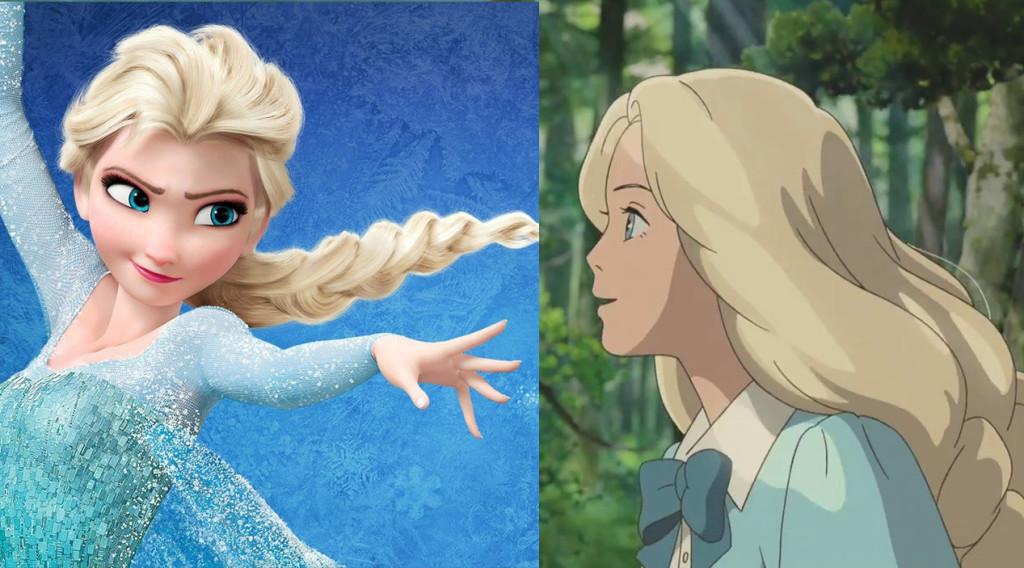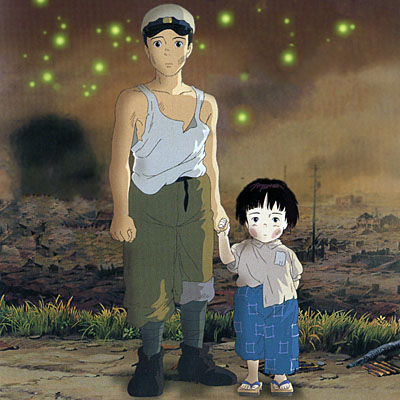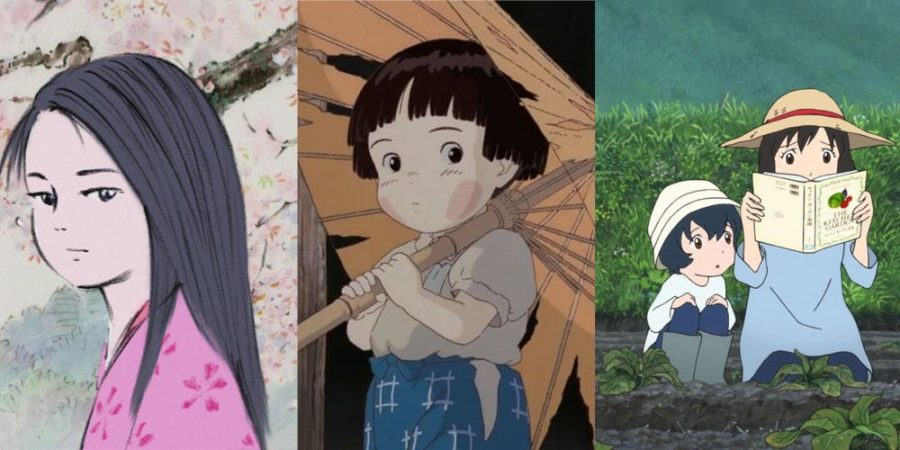If you’re not very familiar with the world of Japanese animation, hearing the word “anime” might make you think of children’s cartoons you used to watch on Saturday mornings, like “Pokémon” or “Dragon Ball Z.” While these shows fall under the umbrella of anime, they are just the tip of the iceberg.
Up until a few weeks ago, I too was not aware of the extremely rich and entertaining variety of anime that existed. My first encounter with anime (outside Saturday morning cartoons) was when I was about nine years old. My mom took my siblings and I to see the Hayao Miyazaki film “Spirited Away.” At the time, I didn’t enjoy it at all. I thought it was boring, confusing, weird and creepy. Why? Because I was a child, and “Spirited Away” is not really a children’s film. Like many anime feature films, it is an experience better appreciated by mature viewers.
That isn’t to say that anime shouldn’t be viewed by children at all. If kids grow up watching anime, that’s fine. The problem for many kids is that they are raised on American animation with simple plots, flat characters and cheap comic relief. Then, when they encounter a Japanese animation with complex character development, deep themes, subtle dialogue and thought-provoking stories, they find it boring, as I did with “Spirited Away.”
In the course of the last several weeks, however, I have gone on a journey to discover some of the best that anime has to offer. As a student, I don’t have time to devote to an ongoing anime series, so this article will deal exclusively with feature films.
Going into this movie marathon, I predicted that I would gain a better appreciation for anime. But I had no idea how powerful and entertaining these films would be. There wasn’t one that I disliked, and many of them instantly joined my list of all-time favorite movies as soon as the credits rolled. All these movies featured not only beautiful animation, but also interesting and authentic characters, as well as expertly crafted narratives.

One of the misconceptions about anime is that it all looks the same. This couldn’t be further from the truth. Although anime as a genre is easily recognizable, there is a wide variety of styles and techniques that can give each film a unique look and feel.
Take, for example, “The Tale of the Princess Kaguya.” The film is an adaptation of a Japanese folktale. The studio opted to go with a raw animation style, with lots of watercolors and negative space, in order to invoke the aesthetic of an ancient scroll. It’s a very minimalist style, but it works beautifully, and it allows the director to portray the story in a way that wouldn’t be possible with CGI animation.
In one scene, a character grows increasingly upset, and as she does, the animation itself becomes more and more wild and untamed until it eventually devolves into a mess of scribbles. Very few films are able to so successfully intertwine the content of their film with the form in which they present it.
A lot of people might say they prefer American animation because “it looks more realistic.” In Japanese animation, they say, the characters all have silly, exaggerated faces and features. Really? Let’s do a side-by-side comparison.

These two films, “When Marnie Was There” and “Frozen,” came out within one year of each other. Frozen was one of the most popular American animated films in years. “When Marnie Was There” is (maybe) the last film to be produced by anime legends Studio Ghibli.
Looking at the two, which is more realistic? Well, it depends on what you mean by the word ‘realistic.’ If realistic to you means how close an image comes to being photo-realistic (indistinguishable from real life) then obviously “Frozen” is the more realistic of the two. On the other hand, I look at this and see one image that was made by a computer program (with some human help) and another image that appears to have been drawn by hand. For me, at least, the image on the right has a human quality to it that makes it much more “real” than the image on the left, which can easily be reduced to a bunch of ones and zeroes.
Don’t get me wrong. I enjoy Disney and Pixar movies as much as the next guy. But to dismiss anime for not “keeping up” with American animation just doesn’t make sense. Japan hasn’t undertaken the quest for the unattainable photo-realism, not because they’re incapable, but because they know that traditional animation as an art form doesn’t need to wholly rely on computers to be beautiful and engaging.
A common trend amongst all the anime films I watched is that the characters are believable. They do things that normal, everyday people would do. They say things that real people do. Their actions and choices make sense. And because they are so believable, they become relatable. As the movies progress, you really feel a connection with these characters.
Amazingly, these characters sometimes even feel more real than characters in a live-action film. Every year, there are plenty of Hollywood actors that turn in amazing performances of characters that are every bit as believable as the best characters in anime. The problem is that when you watch those movies, a part of you will always see the actor who is performing the role. Tom Hanks can give the performance of a life-time, but watching it, you will still be acutely aware that you’re watching Tom Hanks.
In anime, these interesting and complex characters are often given nondescript faces. They aren’t detailed enough to look like any particular person. In “Grave of the Fireflies,” the boy character has such a generic face that we, as viewers, begin to subconsciously project our own face onto his. He could be anybody, so why not us, or our neighbor or our family?

In this way, anime characters become something of a blank slate that we can fill with our own identity and then experience the film in a very personal and meaningful way.
We don’t become distracted by the fact that we’re watching a multi-millionaire actor, and we don’t get distracted by the characters doing things that we wouldn’t do. When you combine those two accomplishments, you’re left with some of the most relatable characters in all of film.
Of course, relatable characters don’t do you much good unless you have an excellent story to put them in. Thankfully, anime delivers in this department as well.
One of the first things I noticed after watching my first several anime films was that none of them had a “bad guy.” Traditionally, that’s where most movies derive their central conflict from: How will the good guy defeat the bad guy? That’s not a bad thing. I love many movies that stick to that formula. But many American movies don’t reach their full potential because they rely so heavily on it.
Let’s return to “Frozen.” “Frozen” had a really great start where story is concerned. It focused on the relationship between two sisters and asked some good questions about identity and community. There was interesting internal conflict and character development. Then it introduced a “bad guy,” and more traditional story archetypes and the interesting part of the story kind of got pushed aside.
Anime films, on the other hand, have “simple” plots that leave room for things like character development and deep exploration of multiple themes. The conflict is internal, as characters cope with crises of identity and morality. Or, the conflict lies in the complications of familial relations, or in a struggle to survive in one’s environment. The stories are told so masterfully that there is no need to introduce a villain to make the movie interesting.
Anime films may sometimes incorporate fantastical elements, but they aren’t the central focus of the plot. “Wolf Children,” for example, is about two kids who can turn into wolves. But the story is more about their single mother and her struggle to take care of them on a day-to-day basis. “The Girl Who Leapt Through Time” features some creative use of time-traveling. But what the story’s really about is examining the intersection of fate and free-will and the problems that can arise when we try to exert total control over our lives.
Not only are these stories interesting and engaging, but some of them will even leave you an emotional wreck. “The Grave of the Fireflies” is about the effects of World War II on children, and it is brutal. The film critic Roger Ebert considered it to be one of the greatest war films ever made. “Perfect Blue” is a psychological thriller-horror film so intense that David Fincher bought the movie rights in America so he could recreate one scene, shot-for-shot, in “Requiem for a Dream.” And there’s my personal favorite, “The Tale of the Princess Kaguya” which has one of the most amazing endings to a movie I have ever seen. It is at once both devastatingly sad and incredibly soothing and peaceful. It was the epitome of catharsis and left me thinking about it for days to come.
Although I have only scratched the surface of anime, I have loved what I have found. I’m sure the few films I have seen thus far are not representative of anime as a whole, so the observations I have made certainly won’t apply to every anime film.
If you have yet to discover anime film, I encourage you to give it an honest try with an open mind. I promise you won’t be disappointed.
For reference, here are some of my favorites that I have watched thus far: “The Tale of the Princess Kaguya”, “Wolf Children,” “The Grave of the Fireflies,” “Spirited Away,” “The Girl Who Leapt Through Time” and “My Neighbor Totoro.”
@leurp_adams on Twitter












